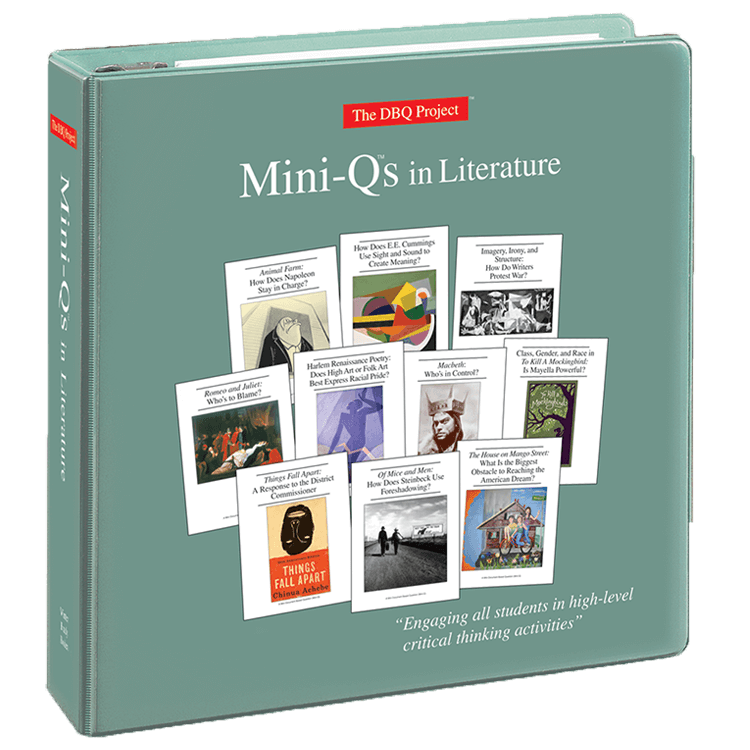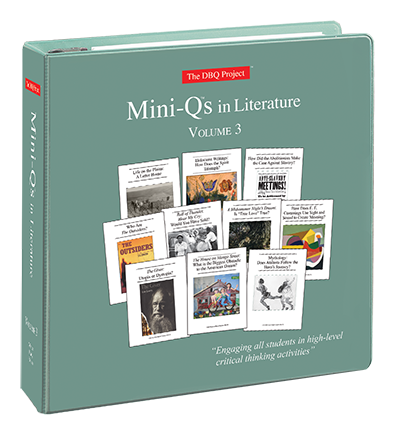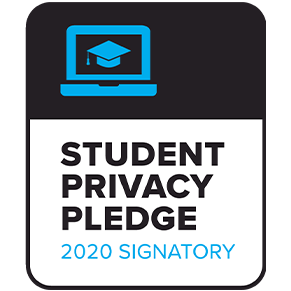Mini-Qs in Literature
Volume 1
Ten High-Interest Units of Study
- Class, Gender, and Race in To Kill A Mockingbrid: Is Mayella Powerful?
- The House on Mango Street: What Is the Biggest Obstacle to Reaching the American Dream?
- Of Mice and Men: How Does Steinbeck Use Foreshadowing?
- Harlem Renaissance Poetry: Does High Art or Folk Art Best Express Racial Pride?
- Animal Farm: How Does Napoleon Stay In Charge?
- Imagery, Irony, and Structure: How Do Writers Protest War?
- Things Fall Apart: A Response to the District Commissioner
- How does E.E. Cummings Use Sight and Sound to Create Meaning?
- Romeo and Juliet: Who’s to Blame?
- Macbeth: Who’s in Control?




